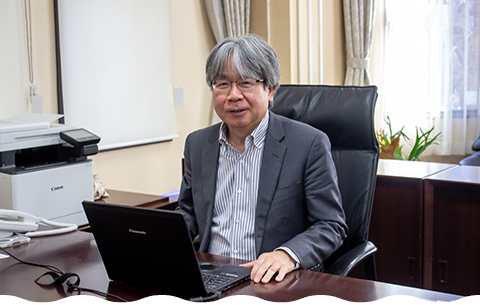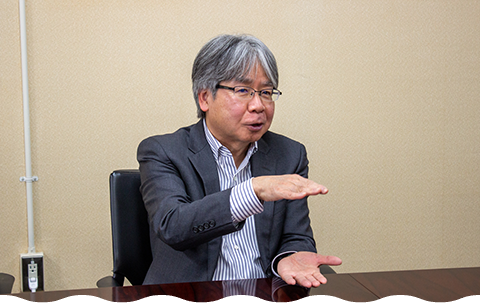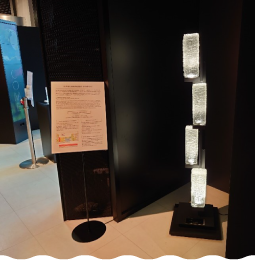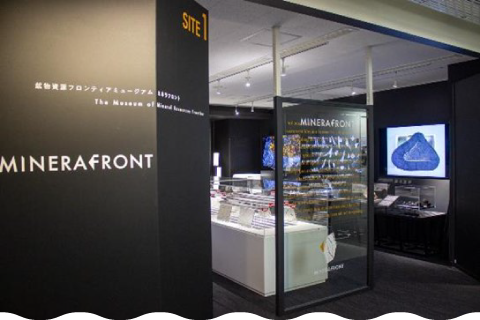
A. ORCeNG was established in 2017 to create a next-generation society in which humanity and the Earth are in harmony through the exploration, discovery, development, and practical application of seafloor mineral resources such as rare-earth elements (REE)-rich mud and manganese nodules distributed in the deep sea. Seafloor mineral resources will become important in the future as a new source of critical metals including REE, which are indispensable for Japan's economic and industrial growth. However, few institutions and researchers in Japan specialize in this field. As a research center focused on such marine resources for the next generation, the center conducts research and development using state-of-the-art geoscientific approaches.

A. One important pillar of our research is to uncover the
formation mechanisms of seafloor mineral resources. Exploration
of seafloor mineral resources requires an enormous amount of
effort, but by understanding when, where, and how minerals are
formed, we can theoretically predict where economically valuable
and promising resources can be found today, which allows for
highly accurate and efficient exploration. We are now
particularly focusing on the study of “REE-rich mud” and
“manganese nodules”.
REE-rich mud is a new type of seafloor mineral resource
discovered in 2011 by a University of Tokyo’s research team led
by myself. REE-rich mud refers to deep-sea sediments with a
concentration of over 400 ppm of rare-earth elements, which are
essential for low-carbon technologies needed in electric car
motors and wind power generators, etc. In 2013, “extremely
REE-rich mud” with a concentration of over 7,000 ppm was
discovered in the waters around Minamitorishima Island, which is
within the Japan's exclusive economic zone. Furthermore, our
research has revealed that the formation of this extremely
REE-rich mud was deeply related to the Earth's cooling about 34
million years ago. With the development of the Antarctic ice
sheet, the deep ocean circulation became more active, and
nutrients upwelled around seamounts, increasing the number of
fish species. The teeth and bones of fish have the quality of
concentrating rare-earth elements. Therefore, it is believed
that due to the increase in the number of fish and their bone
fragments accumulating on the seafloor, these fragments absorbed
rare-earth elements from the seawater and formed sediments rich
in rare-earth elements. This is a significant finding because it
is the first case in the world to demonstrate that seafloor
mineral resources are closely related to dynamic changes in the
Earth's environment.
Manganese nodules, on the other hand, are spherical seafloor
mineral resources distributed at the deep seafloor, and enriched
in cobalt and nickel, which are used as cathode materials for
lithium-ion batteries. In 2016, a University of Tokyo’s research
team led by myself discovered that a vast manganese nodule field
is also distributed on the seafloor around Minamitorishima
Island, and we are currently working with the Nippon Foundation
to develop this resource. The manganese nodules contain
information on past changes in the marine environment, and we
are currently analyzing them to determine when they formed. As
the analysis progresses, we believe it will provide new clues to
understanding the important link between global environmental
changes and the formation of critical metal resources.
Thus, the study of marine resources is an important field that
contributes not only to securing new sources of supply for the
growing global demand for critical metals, but also to
understanding the history of changes in the global environment.
Through this research, we will continue to explore ways to
address sustainable resource utilization and environmental
issues.
 〈 Director Kato explains his research 〉
〈 Director Kato explains his research 〉

A. We believe that if we can extract REE-rich mud from the deep-sea floor, we can build a process flow, such as smelting, that will lead to practical use of the REE using existing technologies. To demonstrate this point, we created “A Light from Minamitorishima” using rare-earth elements refined from REE-rich mud actually collected in the Minamitorishima Island area with the cooperation of various companies.

A. There are three steps involved in the production of LEDs from
REE-rich mud: (1) extraction of rare-earth elements from the mud
and recovery of mixed rare-earth oxides, (2) separation of
rare-earth elements (purification of yttrium and cerium), and
(3) creation of white LEDs. First, REE-rich mud is soaked in
diluted hydrochloric acid to extract the rare-earth elements,
and the mixture of rare-earth elements and other elements are
separated by a method called column separation. Next, the
rare-earth elements are separated individually by ion exchange
to purify the yttrium and cerium. Finally, the purified yttrium
and cerium are used to create white LEDs.
Separating each element individually from mixed rare-earth
oxides, a mixture of 17 different rare-earth elements, is a
difficult process and, thus, demonstrates the advanced
technology of Japanese companies.

A. Visitors are very interested in the exhibit of “A Light from Minamitorishima” and sometimes ask specific questions such as “How do you extract rare-earth elements?” and “How do you utilize rare-earth elements?” In addition to the Tokyo Skytree Town® campus, “A Light from Minamamitorishima” is on display at the Museum of Mineral Resources Frontier “MINERAFRONT” (Building 3, Faculty of Engineering, The University of Tokyo), which was jointly established by the Chiba Institute of Technology and the Graduate School of Engineering of the University of Tokyo (as of January 2025).
 〈 MINERAFRONT, The Museum of Mineral Resources Frontier,
Faculty of Engineering, The University of Tokyo 〉
〈 MINERAFRONT, The Museum of Mineral Resources Frontier,
Faculty of Engineering, The University of Tokyo 〉
A. I would like to encourage the citizens of Tokyo to be more interested in Minamitorishima Island, which is part of Tokyo. Tokyo has wonderful resources that could change the world. We hope that many people will learn about its value and feel proud of it. We hope to achieve the development of this resource, and by promoting its utilization in the real world, we hope to revitalize not only Tokyo, but also Japan as a whole. We would be very happy if you would support us in this endeavor.